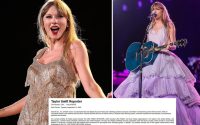Federal Reserve’s preferred inflation gauge slowed in February
The Federal Reserve’s preferred measure of inflation slowed in February, stoking optimism that the central bank is nearing the end of its interest rate-hiking campaign even as prices remain higher than normal.
Overall consumer prices increased by 5% in February compared to the same month one year earlier, according to the Commerce Department’s latest Personal Consumption Expenditures index data released Friday.
That was down from a revised 5.3% increase in January.
On a monthly basis, overall PCE inflation rose by 0.3% from January to February — a slowdown compared to a revised month-over-month increase of 0.6% from December to January.
Core PCE inflation, which excludes volatile food and energy prices, rose by 4.6% year-over-year and by 0.3% on a month-over-month basis.
The annual increase was down from 4.7% in January and slightly lower than economists expected, according to Dow Jones data.
Despite some progress, inflation is still hammering American households and running far above the Fed’s 2% target.
The Fed’s most recent projections from this month suggest at least one more interest rate hike to come – though some experts have argued the recent turmoil at US banks could lead Chair Jerome Powell and his colleagues to pause or even cut rates by the end of the year.

“The inflation trend looks promising for investors,” said Jeffrey Roach, chief economist at LPL Financial.
“Inflation will likely be below 4% by the end of the year, giving the Federal Reserve some leeway to cut rates by the end of the year if the economy falls into recession,” Roach added.
US stocks were trading higher after the PCE inflation report surfaced.
The Dow Jones Industrial Average was up more than 160 points.
The tech-heavy Nasdaq rose 60 points and the broad-based S&P 500 rose about 20 points.
Consumer spending – a key measure of overall economic activity – increased slightly less than expected at 0.2%, down from a revised 2% gain the previous month.
Personal income jumped 0.3%, slightly more than expected.

The Fed enacted a quarter percentage point rate hike after its two-day policy meeting earlier this month in a sign that central bankers were prioritizing bringing down inflation over economic fears related to the failures of Silicon Valley Bank and Signature Bank of New York.
At the time, Powell said the bank chaos could have a cooling effect on the economy and contribute to falling prices.
“Such a tightening in financial conditions would work in the same direction as rate tightening,” Powell said at his March 22 press conference. “You can think of it as being the equivalent of a rate hike or perhaps more than that.”

The Fed will hold its next policy meeting on May 2-3.
The market is currently divided on whether another hike will be approved – with investors pricing in a 48.2% probability that rates will stay unchanged and a 51.8% probability of another quarter-point hike, according to CME Group’s FedWatch tool.
“The pieces are now in place for inflation to come down rapidly as the economy ebbs closer to recession,” said Jamie Cox, managing partner at Harris Financial Group.
“The focus will now turn to when the Fed will recognize it went too far, too fast and will have to reverse course,” Cox added.


